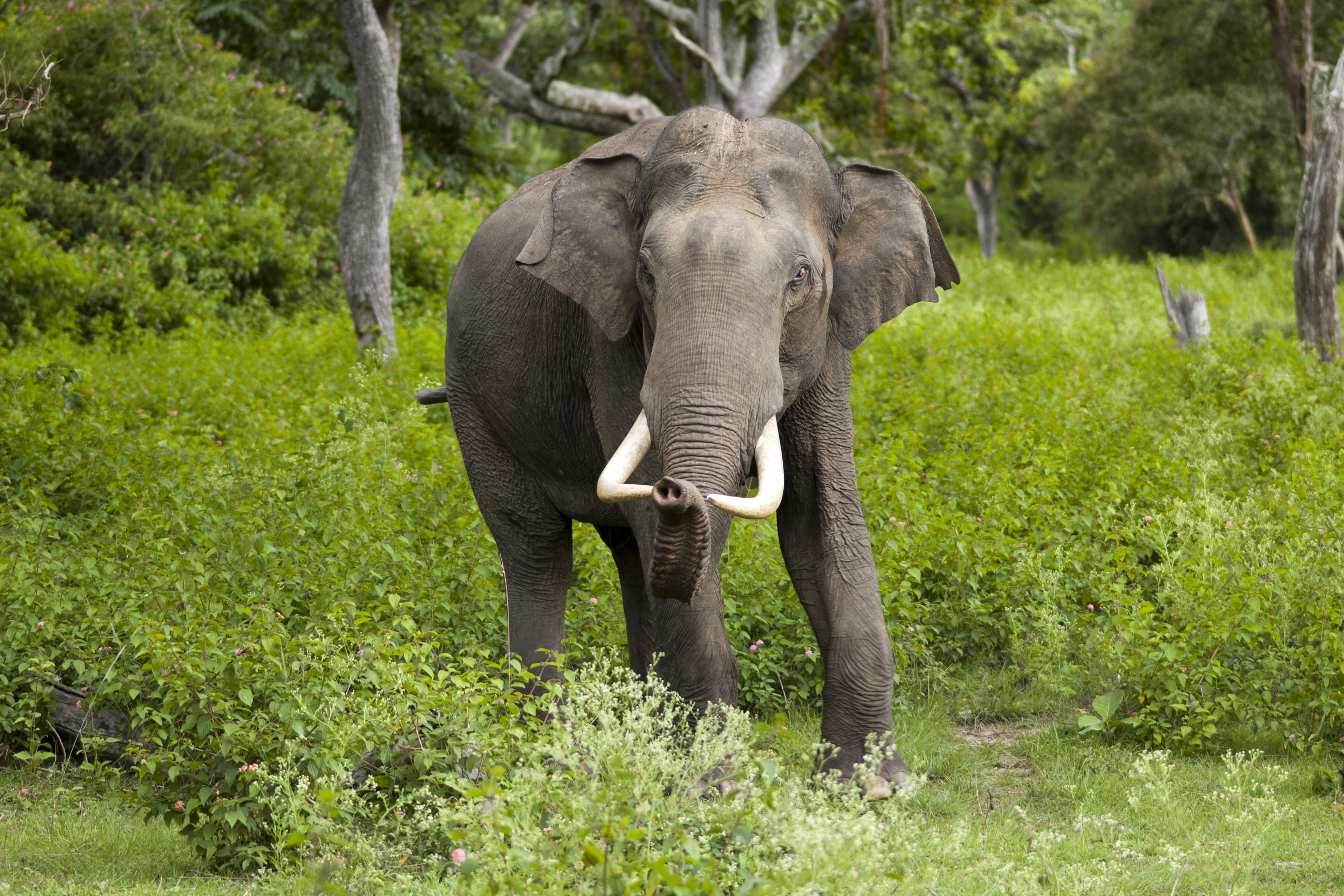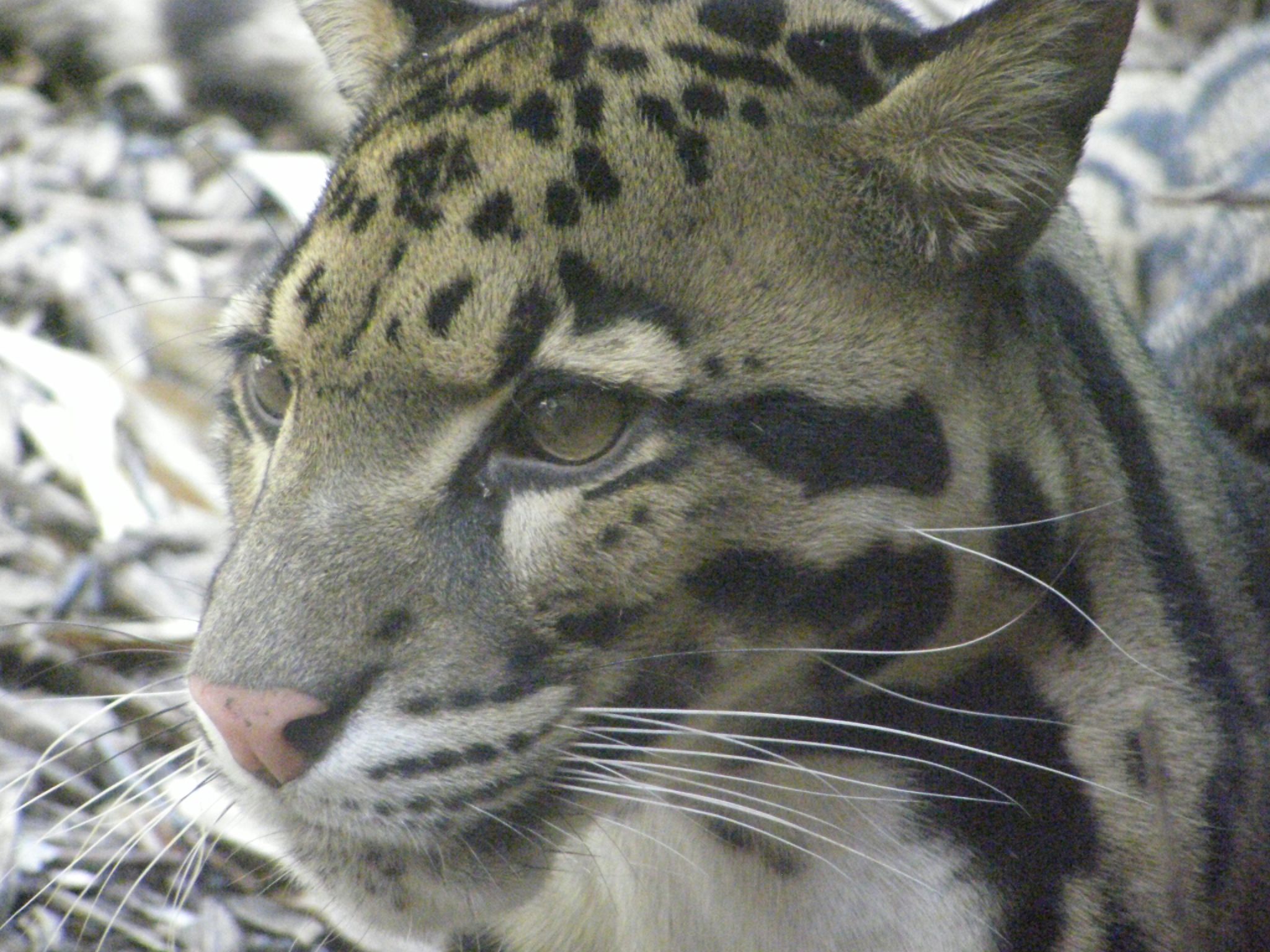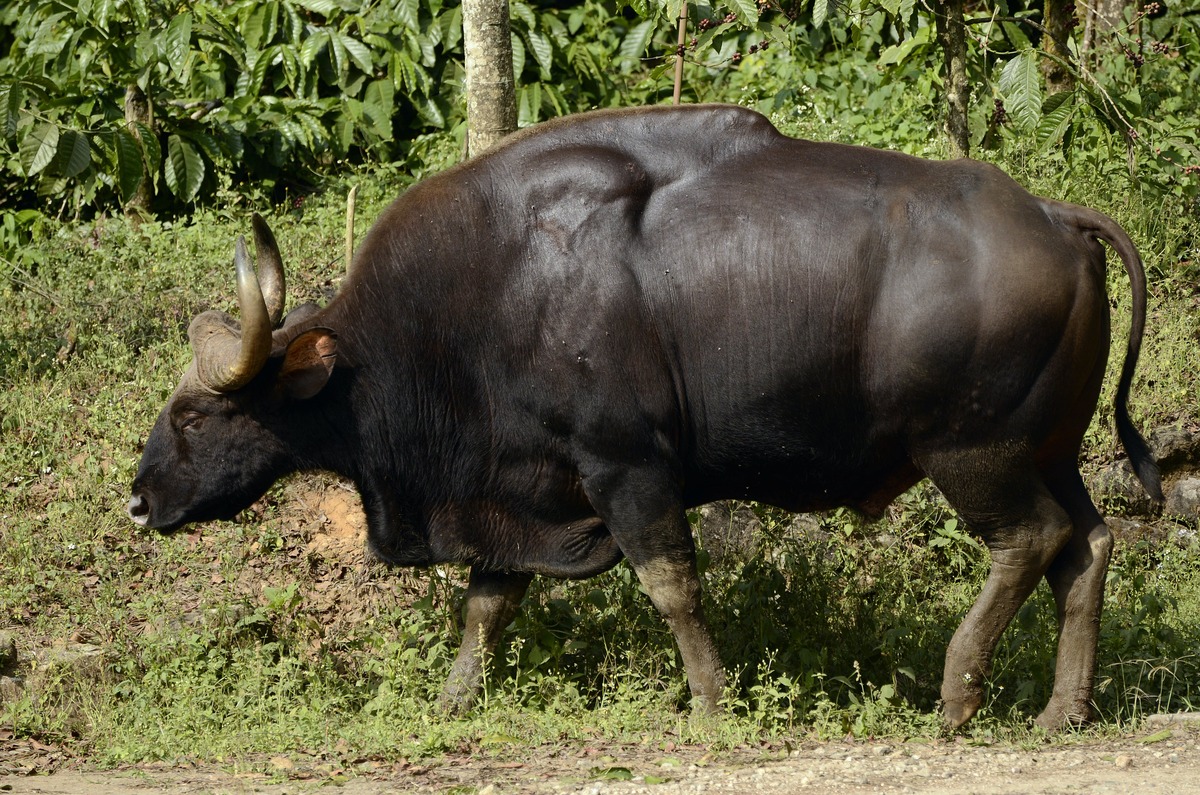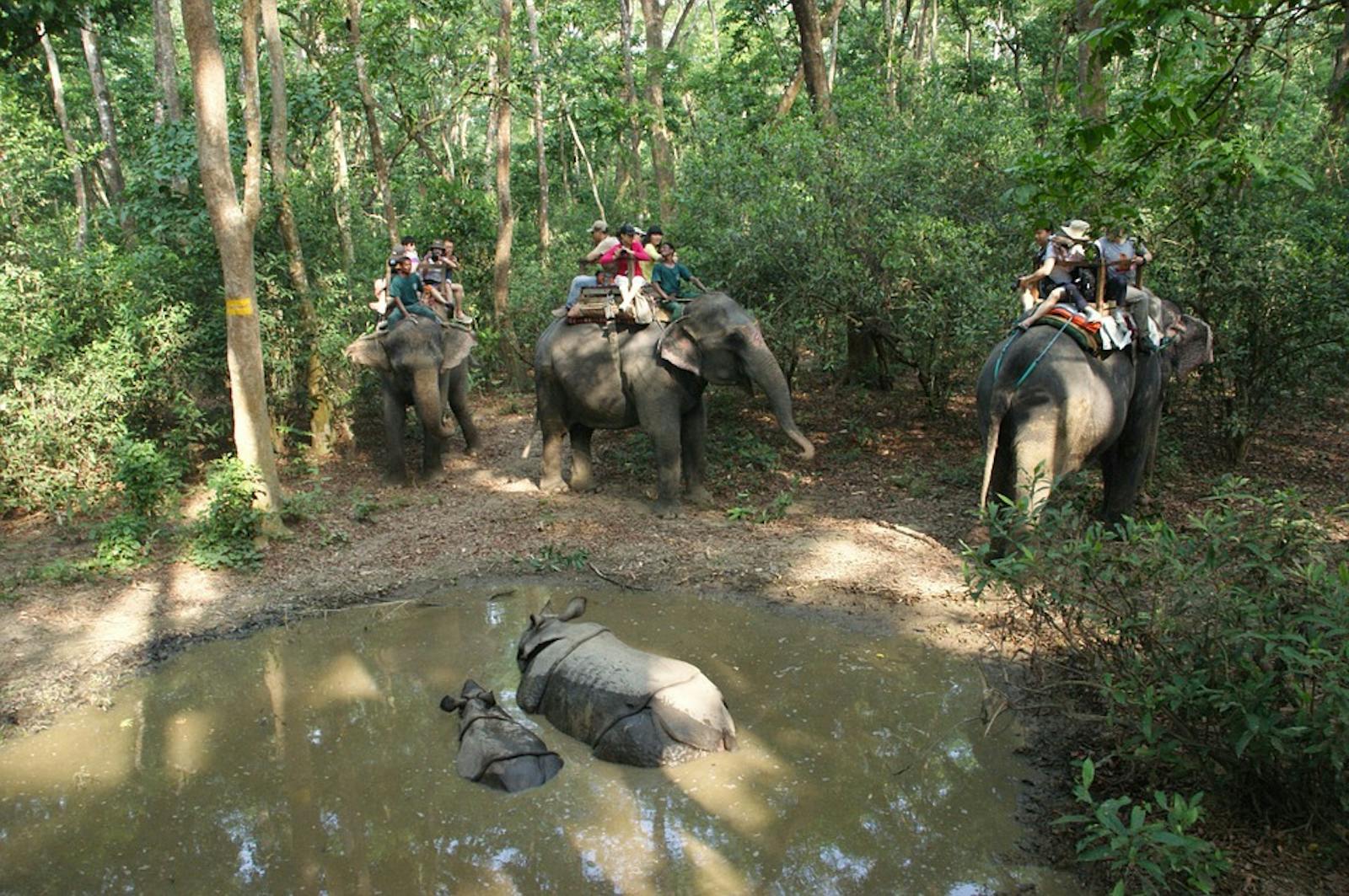Himalayan Subtropical Broadleaf Forests
The ecoregion’s land area is provided in units of 1,000 hectares. The conservation target is the Global Safety Net (GSN1) area for the given ecoregion. The protection level indicates the percentage of the GSN goal that is currently protected on a scale of 0-10. N/A means data is not available at this time.
Bioregion: Himalayan Mixed Forests & Grasslands (IM5)
Realm: Indomalaya
Ecoregion Size (1000 ha):
3,827
Ecoregion ID:
233
Conservation Target:
33%
Protection Level:
4
States: Bhutan, India, Nepal
The Himalayan Subtropical Broadleaf Forests ecoregion is the common habitat for a large number of migrating birds such as the demoiselle crane, bar-headed goose, ruddy shelduck, and many birds of prey that descend from Europe and the Tibetan Plateau during the winter, as well as summer migrants such as barbets, fly catchers, pittas, and bee-eaters that fly up from the Indian subcontinent.

The flagship species of the Himalayan Subtropical Broadleaf Forests ecoregion is the rufous-necked hornbill. Image credit: Creative Commons
The ecoregion extends from the tiny Himalayan Kingdom of Bhutan in the east to Nepal in the west, as it traverses the Siwalik Hills, the southernmost range of the Himalayan Mountains. These hills are composed of alluvial soils washed down from the Himalaya through the ages by the rivers.
Because the Himalayan Mountains capture moisture from the monsoon that sweeps in from the Bay of Bengal in the east, most of the rainfall is expended in the eastern region, with declining precipitation moving westwards. While rainfall varies along this gradient, on average it can be as much as 2,000 mm per year.

Indian elephant. Image credit: Yathin S Krishnappa, Creative Commons
The ecoregion achieves its greatest coverage in the middle hills of central Nepal, where it intrudes northwards along the valley of the Kali Gandaki River that has gouged out the world’s deepest river valley through the Himalaya in central Nepal. These broadleaf forests, lying between 500 and 1,000 m along the foothills of the Himalayan mountain range, range from mixed deciduous forests to subtropical wet hill forests. This is because of a complex combination of the subtropical climate, topography, moisture gradient, and intermingling of taxa originating from two different floristic zones, namely the Indo-Malayan from the south and the Palearctic from the north.

Clouded leopard. Image credit: Frank Wouters, Creative Commons
The forests are tall and trees can reach 30 to even 50 m in height. The dominant trees include Sal, or Shorea robusta, and species of Terminalia, Bauhinia, Schima, and Castanopsis, which are typical of Asian subtropical and tropical forests. Climbers and epiphytes are common in the denser forests.
Almost 100 mammal species have been recorded from this ecoregion, including several highly charismatic species such as the tiger, gaur, clouded leopard, wild dog, and serow. The striking and aptly named golden langur is restricted to a small area in Bhutan and India. The bird fauna comprises of over 340 species, including the globally threatened white-winged wood duck and five species of hornbills that play a very important role in maintaining the ecological structure of forests by dispersing seeds.

Indian gaur. Image credit: P Jeganathan, Creative Commons
Because the alluvial soils are productive, most of the forests have been cleared for cultivation, especially along the fertile river valleys. But some hill forests still remain, left alone because of the dangers associated with clearing steep, erosion-prone slopes. However, fuelwood collection, livestock grazing, and burning to create pasture for livestock have contributed to the degradation of these forests.
The priority conservation actions are to: 1) stop further forest degradation from livestock grazing and unsustainable forest use; 2) connect protected areas with habitat corridors by restoration if necessary; and 3) maintain north-south habitat connectivity, especially along the river basins as a climate adaptation strategy to increase resilience and maintain climate corridors.
Citations
1. CEPF. 2005. Ecosystem Profile. Eastern Himalayas Region. Prepared by WWF-US, Asia Program and BirdLife International.
2. Wikramanayake, E, E. Dinerstein, et al. 2002. Terrestrial Ecoregions of the Indo-Pacific: A Conservation Assessment. Island Press.
3. Nakul, C. and Bandana, S., 2008. Species to landscape: a paradigm shift in biodiversity conservation through people's participation and policy reform. In Policy priorities for sustainable mountain development. Full Proceedings of the ICIMOD regional policy workshop, Kathmandu, Nepal, 18-20 September, 2006. International Centre for Integrated Mountain Development (ICIMOD).



